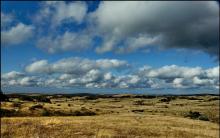The world does not stand still and the number of people increases every year. The problem of producing food, clothing and other material goods is becoming increasingly acute: factories operate 24/7, more and more new inventions appear - and old ones are sent straight to landfill. Things get old, people buy something new, businesses continue to produce household appliances, cars, cigarettes and computers, dumping waste directly into the nearest body of water.
And the larger the city that grows up around the production center, the more people live and suffer from terrible pollution, which sooner or later leads to their death. Almost every metropolis in the world can be considered a dirty place, not very suitable for a good life. But there are also cities with such levels of pollution that scientists put them on a separate list. Here are 10 of the darkest places on the planet from an environmental point of view, where no one is recommended to live.

Ethiopia
Due to urbanization and population growth, the city of Addis Ababa is faced with a shortage of fresh water and severe unsanitary conditions. Groundwater is polluted by industrial and municipal waste. High levels of chromium have been found in the headwaters of rivers that have served as a source of drinking water for years.
Mumbai

India
Mumbai is the eighth most populous city in the world, with a whopping 12.7 million people living here - and that's just according to official data. The roads serve more than 70,0000 private vehicles per day, causing not only wild traffic jams, but also severe air pollution. The noise level is completely indescribable. As well as, however, the percentage of nitrogen oxide in the air, which even leads to acid rain.
New Delhi

India
Most of the premature deaths in New Delhi are due to severe air pollution. According to a report by the World Health Organization back in 2014, New Delhi holds the first place among all 1,600 cities in the world: the level of air pollution here is 10 times higher than the permissible maximum.
Mexico City

Mexico
Experts say that breathing in Mexico City is comparable to smoking two packs of cigarettes a day. Now the condition of the city has improved a little, but back in the 90s the UN stated that the air here could kill birds flying past.
Port-au-Prince

Haiti
Due to unreliable power grids, residents of Port-au-Prince are choosing to use diesel generators as a viable alternative. In addition, they actively use coal and, in general, anything that burns for cooking. These factors, plus the habit of burning garbage and fairly congested roads, make Port-au-Prince not the most pleasant city to live in.
Norilsk

Russia
Norilsk is the world's largest heavy metal processing center. 4 million tons of cadmium, copper, lead, nickel, arsenic, selenium and zinc are released into the air every year. The city is so polluted that residents suffer from dozens of diseases: there is the highest likelihood of developing cancer, lung disease, blood disease, skin diseases and even depression. Vegetation simply does not exist; berries and mushrooms are poisonous, since the air contains large amounts of sulfur dioxide.
Dhaka
Bangladesh
Up to 95% of the country's officially registered tanneries are located in Dhaka. These plants are outdated and dump up to 22,000 cubic liters of toxic waste into rivers every day. One of these toxins is hexavalent chromium, which leads to cancer.
Karachi

Pakistan
The population of Pakistani Karachi is 22 million people. Even without industrial plants, such a number of people simply drown the surrounding nature in their own waste. Waste textiles, plastics and leather float in wastewater from chemical plants. 8,000 tons of solid waste is dumped in the Arabian Sea every day.
Mailuu-Su
Kyrgyzstan
Mailuu-Suu, a mining town in southern Kyrgyzstan, is known as one of the most contaminated places in the world: it was here that radioactive waste was brought from all over the Soviet Union.
Linfen

China
Coal mining throughout China's Linfen province makes it one of the worst places on the planet. If in the 1980s, in terms of the severity of health damage, the air in Mexico City could be equated to smoking two packs of cigarettes a day, then in Linfen residents still consume an amount of carcinogens comparable to three packs. The vast majority suffer from cancer and chronic lung problems.











The most beautiful motorcycles in the world
Which sea is the cleanest in the world?
Top 10 Most Expensive Furs
The largest and most luxurious casinos in the world
Knightly orders of Europe XI - XIII centuries